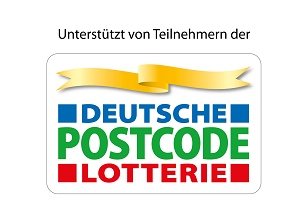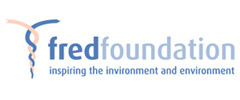Second Conference of the Parties - results
Analysis on the results of the Second Conference of the Parties to the Stockholm Convention (COP-2) on Persistent Organic Pollutants
27.07.2006 |Elena Manvelian
Within the framework of the meeting were created working groups on financial resources, technical assistance, synergism, DDT, effectiveness evaluation of the implementation, evaluation of waste clusters, work of the Secretariat and the budget. These working groups did their work in parallel with the plenary meetings. Every day at the plenary meetings were heard and discussed the reports of the contact groups.
There was adopted several reports about the activities and 18 decisions, including decisions on DDT, exclusions, financial resources and mechanism, implementation plans, technical assistance, synergism and effectiveness evaluation.
Discussions on financial recourses were particularly critical. Since substantial financing will be needed to implement the Convention, realization of the Conventionís goals will be dependant on a successful outcome with regard to financing.
Discussions centered on: COPís evaluation of the GEFís work, mobilization of recourses, search of new possible funding sources, second review of the financial mechanism, including the statement about the necessity of evaluation of GEF principles on incremental costs and benefits pertaining to POPs, and also evaluation of adequacy, sustainability and predictability of funding.
The parties never doubted the necessity for financial contributions, as they all conceive what could be achieved in the result of those contributions. One of the key issue affecting the COP-2ís financial deliberations was the uncertainty connected with the financing body-GEF. As the financial mechanism for several MEAs (Multilateral Environmental Agreements), the GEF and its funding criteria are often at the centre of MEAs funding debates. The recent difficult negotiations over the fourth replenishment of the GEF Trust Fund and concerns about future allocations of the new recourses have influenced funding discussions on MEAs, including the other conventions on chemicals.
The role of GEF in the Convention implementation was never doubted. Moreover, recently time has been spent on providing additional guidance to the GEF, clarifying its funding criteria and identifying other sources of finance
The increasing funding demands due to the development of the national implementation plans (NIPs), and the possibility, that the funding pool could decrease if the GEF replenishment continues to be uncertain, could pave the way for a much more difficult financial recourses discussions at COP-3.
The whole meeting was pierced with a big concern of the developing countries, including small island countries with insufficient recourses necessary for the implementation of their commitments on the Stockholm Convention and monitoring.
Mongolia made a request to the donor-countries for the allocation of additional recourses to Global Environmental Fund that is considered to be the financial mechanism.
The second key issue of the Conference was the effectiveness evaluation of the implementation of the commitments to the Stockholm Convention.
During the debates of the above-mentioned issue the President of the COP noted that it has been a permanent process that includes the monitoring of POPs levels, progress in the implementation of NIPs and compliance with commitments to the Stockholm Convention. Discussions focused on options for pulling together information for effectiveness evaluation; linking effectiveness evaluation with technical assistance; and a global monitoring plan. The contact group, created at the Conference, prepared criteria for the effectiveness evaluation, and also a temporary schedule of a work.
The positions and the views of the effectiveness evaluation of Convention implementation have changed since COP-1, and as a result of it, they came to the conclusion that evaluation of the implementation should be done on the basis of existing monitoring programs and databases. Developing country positions reflected a view that the effectiveness evaluation, and possibly the Convention itself, would not be effective unless a more representative global evaluation mechanism could be designed. Effectiveness evaluation has changed from the simple model agreed at COP-1 to a comprehensive global plan that will be more recourse-intensive and demanding, but which should lead to a long-term outcome. Central to the global monitoring plan is the need for resources and long-term funding to facilitate global coverage and capacity building to support the program.
One of the dominant issues on the COP-2 agenda was technical assistance. It was noted that the financial and technical assistance is the key requisite for the implementation of the commitments of the countries. Several countries underlined the necessity of funding the programs aimed at strengthening the capacity building of a country.
There were heard calls for more financial support to the capacity building at a national level. Developing countries view the issue of technical assistance to be their opportunity to ensure that the implementation of their NIPs has adequate financial backing. Developed countries consider that the technical assistance should be provided in away that capitalizes on existing institutions and mechanisms.
Secretariat introduces relevant documentation on guidance of technical assistance, regional centers on capacity building, technologies transfer, terms of reference (ToR) for the regional and subregional centers, and criteria of evaluation.
DDT is still widely used in several countries of Africa as a means of struggle against malaria. The USA Government officially supports and finances the use of DDT in the countries of Africa, that are located to the south from Sahara, though many countries have prohibited the use of this chemical still in 1972 because of its impact on the human health and animals. According to the Stockholm Convention on POPs, the countries should stop using these matters and give preference to the safe alternatives. However, DDT is one of the exceptions in the list, as it is necessary for fighting against malaria. The Convention permits to use DDT only for the purpose of decreasing the degree of morbidity with malaria, at the same time offers an opportunity to test and use alternative substances of DDT. Though the alternative chemicals are expensive, however, the financial mechanism of the Stockholm Convention enables the poor countries to use them. About 30 states continue to use a considerable amount of DDT. Though the usage of DDT was stopped in 1980s, the people had to turn to this chemical because of the increase of mortality from malaria among the children and women.
The Stockholm Convention does not establish a concrete date when the use of DDT should be stopped. However, the Parties to the Convention are to report every three years about the use of DDT.
Discussions on DDT mainly centered on promotion and effectiveness evaluation of alternatives of DDT. In the concluding document was underlined the necessity of collecting information about the evaluation of demand for DDT and alternative substances to fight against malaria. The GEF and other financial institutions should support the initiatives for further evaluation of economic effectiveness and safety of alternatives and other means of fighting against malaria for people and the environment.
It is supposed that by the Third Conference of Parties the Secretariat of the Convention and WHO will prepare a guide for the countries on evaluation of necessity to continue the use of DDT for the purpose of public health care. The governments should facilitate the execution of programs aimed at searching for safe matters, alternatives of DDT.
The representative of the Secretariat introduced the second edition of the standardized set of instruments of UNEP on qualitative and quantitative determination of dioxin and furan waste and offered to adopt this document. Many participants spoke in support of temporary adoption of the document on the basis of its constant transparency periodic revision. Some participants estimated the document as weak and insisted on delaying the adoption unless the methodological shortcomings were eliminated and the data were brought. In the main, everybody agreed that the document should be enriched with big data to be universally usable. The NGOs took the side of delaying the adoption.
The final decision pertaining to the Standardized set of instruments of UNEP on qualitative and quantitative determination of dioxin and furan waste contains the following provisions:
- The delegates of Conference positively estimated the second edition underlining its importance while making the inventory of waste.
- Developing countries marked the necessity to adjust the emission factors and also make this guide more adapted for the needs of developing countries.
- The further process of improvement of a guide should be more open.
- Analogous materials must be prepared for the evaluation and monitoring of content of PCB and HCB.
The delegates adopted a decision on measures about the reduction and stoppage of POPs waste. They greeted the completion of the technical guide on ecologically substantiated management of waste containing POPs, which was prepared by a group of unlimited staff of the Basel Convention. They also greeted the strengthening of cooperation between the secretariats of the Basel and the Stockholm Conventions. Broad discussions, that took place in Geneva at the COP-2 to the Stockholm Convention on POPs aroused an issue of synergism of the three chemical conventions, and namely, the Stockholm Convention on POPs, the Rotterdam Convention on the procedure of the preliminary substantiated agreement with regard to separate chemical matters and pesticides in international trade, and the Basel Convention on control over transboundary transportation of hazardous waste and their liquidation.
Monika Barbew, the head of the technical department and economics of UNEP, during her speech noted that itís important to achieve more coordinated actions of the secretariats. Itís necessary to make the existing cooperation more balanced that could include administrative, financial and legal cooperation. The Conference requested the Secretariat to undertake studies to improve the cooperation and synergism of the three variants of unification: from the partly integration of separate blocs till the entire merger of the three conventions. The aim is to regulate administrative services in order to release recourses that could be directed to the realization of the provisions on POPs. The general legal base will work successfully for the three conventions. There will be no dubbings. The activities of the regional centers will gain strength. Recourses will be released to provide technical assistance.
In response speech the EU marked that the synergism of the conventions required a stage approach. Itís also necessary to recognize the sovereignty of each convention. The parties of all three conventions must be coordinated at a national level so that the COPs could adopt decisions supplementing each other. Many countries regarded the suggestion for the confluence of the conventions with caution and spoke in support of a stage approach. One of the positive moments of the COP was the intention of EU to nominate three new substances into the list of POPs of the Stockholm Convention, and namely: octa-brominated diphenyl ether, pentachlorobenzol, chlorinated paraffin with a short chain.
Delegates discussed issues concerning the development of the national implementation plans to the Stockholm Convention. For the COP-3 the Secretariat should prepare a draft of additional guidance on the elimination of the social-economic consequences of the realization of NIPs, estimation of the risk and the basic expenses. In addition to it, the Secretariat should prepare analysis of the NIPs already submitted from the point of view how much the types of activities are reflected, which is necessary for the settlement of the priority national tasks, and also the best practices on control over POPs. Non-governmental organizations, the members of IPEN, participating at the COP-2, called the delegates to undertake more operative actions for the implementation of the provisions of the Stockholm Convention.
The negotiations on issues of non-compliance reached a deadlock, and the negotiations on the creation of the complex program of monitoring, that could enable to obtain data pertaining to the level of POPs in developing countries, did not get desirable results. The Conference decided to convene the second meeting of the working group prior to COP-3, consider the procedures and mechanisms on non-compliance and requested the working group to submit a report about the work and a progress in recommendation at CPO-3. In opinion of NGOs, for the success of the Stockholm Convention is required adequate financing, clear plans of implementation that will include the participation of the civil society, and political will to keep a promise to liquidate POPs given in the Convention.
































